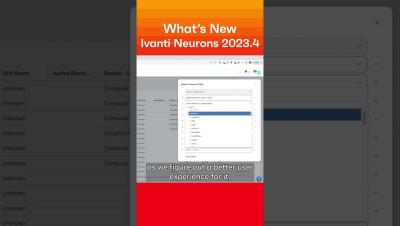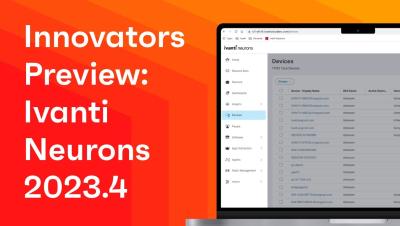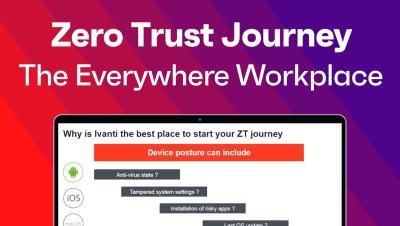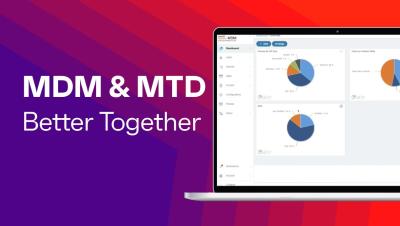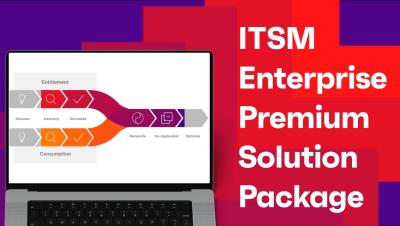Operations | Monitoring | ITSM | DevOps | Cloud
November 2023
Practical Demo: Unlocking Better Outcomes: Proactively Improving DEX
June 2023 Wavelink Wednesday
How to get executives on board for your BIA
Practical Demo: Elevate Your VPN. Empower Your Hybrid Workforce
Lessons learned from Ivanti's business impact assessment
This - and Every - Peak Season, It's Partnerships that Deliver Success
On a retail floor, there's a shopper with a question about product availability. And there’s a store associate with the opportunity to answer, creating a sale and building loyalty. In a distribution center, a picker carefully lifts a fragile item out of a bin and places it in a tote. They confirm the item visually through an image presented in the picker’s application workflow. The order will be fulfilled accurately.
Security Webinar: 3 Secret Elements that Accelerate Risk-Based Patch Management
How security teams can conduct a successful business impact assessment
Innovators Preview - What's New in Ivanti Neurons 2023.4 #shorts
Have Your Cake & Eat It, Too: Seamless Migration from VPN to SSE
Ecosystm DEX discussion panel
Innovators Preview: What's New in Ivanti Neurons 2023.4
Practical Demo: Augmenting Your ITSM with AI & Automation
A Single Pane of Glass: How It Transforms IT Asset Monitoring
How large is your company’s IT infrastructure? How many devices and assets are attached to it? As large as it was yesterday, it’s probably larger today — and will be still larger tomorrow. This is compelling organizations to embrace device and asset monitoring under a “single pane of glass,” meaning via a unified, “single console” view of their entire network to enable unified endpoint management (UEM).
Security Webinar: Navigating the Zero Trust Journey for Today's Everywhere Workplace
MDM vs. MDM: What's the Difference Between Mobile Device Management and Modern Device Management?
When it comes to mobile device management versus modern device management, they may sound similar, but there’s a significant degree of difference between them. The explosive growth in these devices within enterprises makes it crucial for organizations to choose the right platform for overseeing them.
Better Together: MDM & MTD
How to Accelerate Deployment with an ITSM-GitHub Integration
GitHub is one of the most popular version control systems used today, allowing developers to collaborate on projects and quickly deploy their code. However, deploying code through GitHub can also be time-consuming and risky if not done properly. In this blog, we’ll cover how IT teams can reach across the aisle to your colleagues in development to accelerate and protect their GitHub deployment by integrating with the service management software you already use.
ITSM Enterprise Premium Solution Package
How Hackers use Unexpected Skills to Break their Targets
Ivanti Neurons for Discovery
Network Security In an Age of Remote Work
While remote work and hybrid work have always been a thing, they've recently become more popular, and that’s created new challenges for network security. Some companies embrace remote work and/or hybrid work; some try to limit or reverse the trends. For some internal teams, remote work is easily achieved and often preferred. In other cases, in more hands-on and collaborative efforts, being physically onsite can be important.











